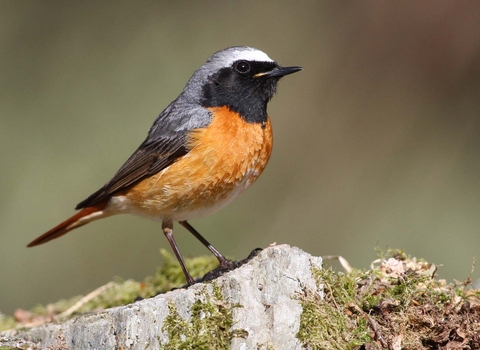
Redstart (male) ©Margaret Holland

©Richard Steel/2020VISION

©Richard Steel/2020VISION
Redstart
A summer visitor to the UK, the red-tailed redstart is a robin-sized bird that can be spotted in woodlands, parks and hedgerows, mainly in the north and west of the UK.
Scientific name
Phoenicurus phoenicurusWhen to see
April to SeptemberSpecies information
Statistics
Length: 14cmWingspan: 22cm
Weight: 15g
Average lifespan: 2 years
Classified in the UK as Amber under the Birds of Conservation Concern 5: the Red List for Birds (2021).
About
An elegant, robin-sized chat, the redstart is a summer visitor, arriving here in April and leaving in September. It feeds on insects, especially butterfly and beetle larvae, and can be seen foraging in woodlands, hedgerows, parks and beside streams. Redstarts have an upright stance and can be seen 'bobbing': moving in a similar fashion to Robins. They spend most of their time in the trees.How to identify
Male redstarts are grey above, with a red breast, black throat, long, black legs, and a long, red tail. The similar-looking black redstart is a dark, sooty grey and red tail, and is a rare nesting bird that frequents city centres and industrial areas, rather than woodlands.Distribution
Found in the north and west of the UK, particularly Wales. Can turn up anywhere during migration.Did you know?
Redstarts are named after their red tail, which they frequently 'shiver'.Watch
Redstart (https://vimeo.com/452223008/64ae367d99)
Redstart by Tom Hibbert
